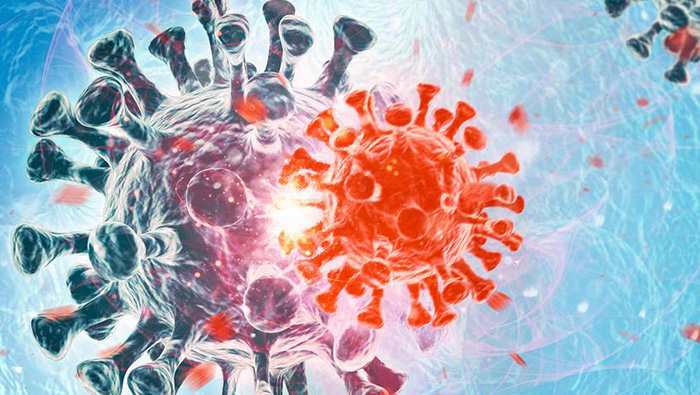
New York: The World Health Organization (WHO) has started monitoring two new sub-lineages of the omicron variant detected by researchers in Botswana and South Africa this week: BA.4 and BA.5.
Investigations are still underway to detemine how infectious and virulent they are.
The new sub-lineages have been identified in four people in Botswana and 23 people in South Africa. They have also been detected in Belgium, Denmark, Germany and the UK.
So far, researchers haven't found any evidence of a significant epidemiological difference to other known omicron variants, and the WHO says there is no need to panic.
"There is no cause for alarm with the emergence of the new sub-variants. We are not yet observing a major spike in cases, hospitalizations or deaths,” said Matshidiso Moeti, the WHO's regional director for Africa, in a press release.
New omicron variant also in Great Britain
Great Britain is also seeing the spread of another new variant: omicron XE. Over 1000 cases of the variant have been detected in the UK so far, according to a recent report published by the UK Health Security Agency.
The variant XE is a combination of the two dominant omicron strains — BA.1, the original variant, and BA.2, which is far more contagious. The resulting viruses contain a combination of genetic material from multiple variants, creating a new version of the SARS-CoV-2 virus.
Recombination of virus variants
Sometimes, while replicating, viruses make mistakes in their genetic code. This can lead to a process called silent mutation, which describes the formation of new, individual mutations that mostly do not change the structure of the virus.
Mutations in the spike protein, for example, can possibly make the virus more transmissible than earlier variants. But that's not what's happening with these specific variants, researchers say.
The omicron XE variant is different because it hasn't picked up new mutations — it's just a recombination of two different variants. Here, two different variants infect the same cell of the same person at the same time.
Once the genetic material of the two variants is combined in the cell, the infected person can go on to infect other individuals with the new version of the virus.
Omicron XE gets most of its genetic information from the omicron BA.2 subtype, but it does not cause more severe disease than the BA.1 subtype.
The omicron variants generally tend to cause a less severe bout with the virus than previous versions like Delta, for example — but they are more contagious.
More information about the new variants will come in the following weeks and months as researchers collect more data on omicron. For now, limited information makes it impossible to draw any solid conclusions.